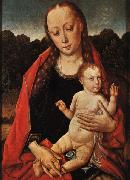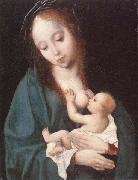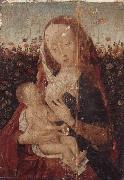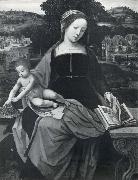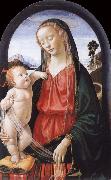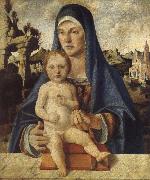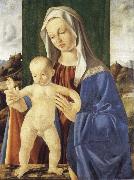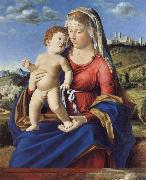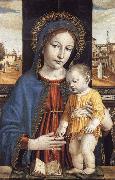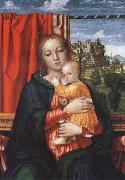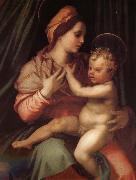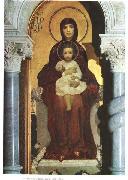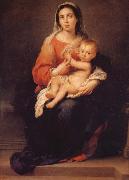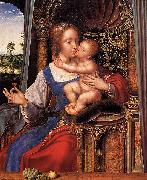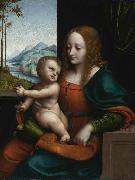Wholesale Oil Painting No Minimum |
|||||||||||
|
|
|||||||||||

|
|||||||||||
|
|
|
||||||||
Dieric Bouts1420-1475 Flemish Dieric Bouts Locations Dirk Bouts whose real name was Theodorik Romboutszoon, was probably born in Haarlem, where he may have studied under the painter Albert van Ouwater. Sometime before 1450 Bouts took up residence in the Flemish city of Louvain. His name appeared in the records of Louvain in 1457 and again in 1468, when he was appointed "city painter." It is likely that Bouts spent some time in Bruges, as his earliest work, the Infancy Altarpiece shows the distinct and strong influence of Petrus Christus, the leading master of that city after the death of Jan van Eyck. The slightly later Deposition Altarpiece (ca. 1450) displays strong connections with the style of Rogier van der Weyden in both the figure types and the composition. About 1460, the period of the Entombment in London, the early, formative influence of Petrus Christus had been almost totally displaced by that of Rogier, though Bouts personal vision began to emerge in the fluid and continuous landscape background. The great Last Supper Altarpiece (1464-1467) marks the high point of Bouts career. In this solemn and dignified masterpiece the painter achieved spiritual grandeur in the context of convincing physical reality. The central panel of the altarpiece is the most emphatically significant treatment of the theme of the Last Supper in Northern European art. The wings, which contain Old Testament prefigurations of the central theme, are freer and more loosely organized. Eschewing the symmetry and rigid axial construction of the main panel, Bouts produced rhythmic foreground compositions in combination with fluid and dramatic spatial recessions. In 1468 Bouts was commissioned to paint four panels on the subject of justice for the Town Hall of Louvain. At the painter death in 1475 only two of the paintings had been completed; they are among the most remarkable productions of his career. The unusual subjects, taken from the chronicles of a 12th-century historian, concern the wrongful execution by Emperor Otto III of one of his counts and the subsequent vindication of the nobleman by his wife. The finer of the panels represents the dramatic trial by fire which the wife was obliged to undergo to prove her husband innocence. Rich draperies and sumptuous colors are applied to tall angular forms to create a work of rare formal elegance and high decorative appeal. In order to dignify the event, however, the artist has employed restrained gestures and expressions as well as a completely rationalized spatial setting. As in the Last Supper Altarpiece, a sense of solemn and hieratic importance is expressed by means of an austere and rigid geometry in the construction of both persons and places. The late productions of Bouts workshop, such as the well-known Pearl of Brabant Altarpiece, are characterized by the close collaboration of the painter two sons, Dirk the Younger (1448-1491) and Aelbrecht (1455/1460-1549). In the paintings of his less gifted sons, the master distinctive figure style was appreciably altered, though Dirk the Younger appears to have retained much of his father sensitivity to the landscape. In addition to his innovations in the depiction of landscape, Bouts made a substantial contribution to the development of the portrait. His Portrait of a Man (1462) localizes the sitter in an enlarged architectural setting while permitting the interior space to merge with the exterior through an open window. For the first time in Northern painting a common bond was forged between a particularized individual and the universal world of nature. |
||||||||
|
|
||||||||
The Virgin and Child
The Virgin and Child Painting ID:: 198 |
Musee Royal des Beaux Arts, Antwerp Musee Royal des Beaux Arts, Antwerp |
|||||||
|
|
||||||||
MASACCIOItalian Early Renaissance Painter, 1401-1428 was the first great painter of the Quattrocento period of the Italian Renaissance. His frescoes are the earliest monuments of Humanism, and introduce a plasticity previously unseen in figure painting. The name Masaccio is a humorous version of Tommaso, meaning "big", "fat", "clumsy" or "messy" Tom. The name was created to distinguish him from his principal collaborator, also called Tommaso, who came to be known as Masolino ("little/delicate Tom"). Despite his brief career, he had a profound influence on other artists. He was one of the first to use scientific perspective in his painting, employing techniques such as vanishing point in art for the first time. He also moved away from the Gothic style and elaborate ornamentation of artists like Gentile da Fabriano to a more natural mode that employed perspective for greater realism. Masaccio was born to Giovanni di Mone Cassa??i and Jacopa di Martinozzo in Castel San Giovanni di Altura, now San Giovanni Valdarno (now part of the province of Arezzo, Tuscany). His father was a notary and his mother the daughter of an innkeeper of Barberino di Mugello, a town a few miles south of Florence. His family name, Cassai, comes from the trade of his grandfather Simone and granduncle Lorenzo, who were carpenters - cabinet makers ("casse", hence "cassai"). His father died in 1406, when Tommaso was only five; in that year another brother was born, called Giovanni after the dead father. He also was to become a painter, with the nickname of "Scheggia" meaning "splinter". The mother was remarried to an elderly apothecary, Tedesco, who guaranteed Masaccio and his family a comfortable childhood. |
||||||||
|
|
||||||||
|
|
The Virgin and Child
The Virgin and Child Painting ID:: 9841 |
1426, National Gallery
London 1426, National Gallery London |
||||||
|
|
||||||||
|
|
||||||||
|
|
The virgin and child
The virgin and child Painting ID:: 27442 |
mk56
oil on panel
Follower of Adriaen Isenbrandt
mk56 oil on panel Follower of Adriaen Isenbrandt |
||||||
|
|
||||||||
|
|
||||||||
|
|
The virgin and child
The virgin and child Painting ID:: 27444 |
mk56
oil on panel
School of Bruges,late 15th Century
mk56 oil on panel School of Bruges,late 15th Century |
||||||
|
|
||||||||
MASTER of Female Half-lengthDutch painter (active 1530-1540) |
||||||||
|
|
||||||||
|
|
The Virgin and child
The Virgin and child Painting ID:: 40984 |
mk159
Oil on panel
53.2x42.5cm
mk159 Oil on panel 53.2x42.5cm |
||||||
|
|
||||||||
Domenico GhirlandaioItalian 1449-1494 Domenico Ghirlandaio Galleries Painter, mosaicist and possibly goldsmith. He was head of one of the most active workshops in late 15th-century Florence. He developed a style of religious narrative that blended the contemporary with the historical in a way that updated the basic tenets of early Renaissance art. Domenico documented material situation |
||||||||
|
|
||||||||
|
|
THe Virgin and Child
THe Virgin and Child Painting ID:: 42871 |
mk170
1480-1490
Tempera on poplar
88.9x57.8cm
mk170 1480-1490 Tempera on poplar 88.9x57.8cm |
||||||
|
|
||||||||
Giorgio Schiavoneborn circa 1433-1504 |
||||||||
|
|
||||||||
|
|
The Virgin and Child
The Virgin and Child Painting ID:: 42906 |
mk170
1455-1460
Tempera on wood
55.9x41.3cm
mk170 1455-1460 Tempera on wood 55.9x41.3cm |
||||||
|
|
||||||||
Bartolomeo MontagnaOrzinuovi ca 1450-Vicenza 1523 .Painter and draughtsman. Montagna is first documented in 1459 in Vicenza as a minor and, still a minor, in 1467. In 1469 he is recorded as a resident of Venice. In 1474 he was living in Vicenza where, in 1476 and 1478, he was commissioned to paint altarpieces (now lost). He has variously been considered a pupil of Andrea Mantegna (Vasari), Giovanni Bellini, Antonello da Messina, Alvise Vivarini, Domenico Morone and Vittore Carpaccio. While none of these artists, except Carpaccio, was irrelevant to Montagna's stylistic formation, scholars agree that Giovanni Bellini was the primary influence on his art. He may have worked in Bellini's shop around 1470. Several of Montagna's paintings of the Virgin and Child in which the influence of Antonello da Messina is especially marked (e.g. two in Belluno, Mus. Civ.; London, N.G., see Davies, no. 802) are likely to be close in date to Antonello's sojourn in Venice (1475-6); they are therefore best considered Montagna's earliest extant works (Gilbert, 1967) rather than as an unexplained parenthesis around 1485 between two Bellinesque phases (Puppi, 1962). These early paintings appear to be followed by others in which the geometrically rounded forms derived from Antonello become more slender and sharper-edged. Their figures are imbued with a deeply felt, individual humanity, sometimes austere and minatory, sometimes tender. Among them are some larger-scale works, |
||||||||
|
|
||||||||
|
|
The Virgin and Child
The Virgin and Child Painting ID:: 42912 |
mk170
1485-1490
Tempera with oil on wood
64.8x54.6cm
mk170 1485-1490 Tempera with oil on wood 64.8x54.6cm |
||||||
|
|
||||||||
BASAITI, MarcoItalian Painter, ca.1470-1530 Marco Basaiti (c. 1470 ?C 1530) was a Venetian painter and a rival of Giovanni Bellini. His best known works are Christ Praying in the Garden (1516) and the Calling of St. Peter and St. Andrew. Christ praying in the GardenThought to have originated in the Balkans, his date of birth and arrival in Venice are not known, but he began to paint actively around 1496. He is generally believed to have learned to paint in the workshops of Alvise Vivarini. Basaiti worked primarily with religious themes, but he also did portraits. Contrary to the trends of the time, he used very bright colours in rendering his religious subjects. |
||||||||
|
|
||||||||
|
|
The Virgin and Child
The Virgin and Child Painting ID:: 42913 |
mk170
1495-1500
Oil on poplar
62.9x47cm
mk170 1495-1500 Oil on poplar 62.9x47cm |
||||||
|
|
||||||||
CIMA da ConeglianoItalian Painter, ca.1459-1517 Italian painter. He belonged to the generation between Giovanni Bellini and Giorgione and was one of the leading painters of early Renaissance Venice. His major works, several of which are signed, are almost all church altarpieces, usually depicting the Virgin and Child enthroned with saints; he also produced a large number of smaller half-length Madonnas. His autograph paintings are executed with great sensitivity and consummate craftsmanship. Fundamental to his artistic formation was the style that Bellini had evolved by the 1470s and 1480s; other important influences were Antonello da Messina and Alvise Vivarini. Although Cima was always capable of modest innovation, his style did not undergo any radical alteration during a career of some 30 years, and his response to the growing taste for Giorgionesque works from the early 16th century remained superficial. He seems to have maintained a sizeable workshop, |
||||||||
|
|
||||||||
|
|
The Virgin and Child
The Virgin and Child Painting ID:: 42914 |
mk170
1495-1500
Oil on wood
69.2x57.2cm
mk170 1495-1500 Oil on wood 69.2x57.2cm |
||||||
|
|
||||||||
Bergognoneactive in Milan 1481-1522 |
||||||||
|
|
||||||||
|
|
The Virgin and Child
The Virgin and Child Painting ID:: 42976 |
mk170
mk170 |
||||||
|
|
||||||||
Bergognoneactive in Milan 1481-1522 |
||||||||
|
|
||||||||
|
|
The Virgin and Child
The Virgin and Child Painting ID:: 42979 |
mk170
circa 1490
Oil on poplar
55.2x35.6
mk170 circa 1490 Oil on poplar 55.2x35.6 |
||||||
|
|
||||||||
Francesco MoroneItalian Painter, 1471-ca.1529 was an Italian painter, active in Verona in a Renaissance style. He was the son of the Veronese painter Domenico Morone. The art biographer Vasari praised his frescoes (1505-7) for the cupola of the sacristy in Santa Maria in Organo. He also painted the organ shutters in that church. Paolo Cavazzola was one of his pupils. |
||||||||
|
|
||||||||
|
|
The Virgin and Child
The Virgin and Child Painting ID:: 43041 |
mk170
1505-1510
Tempera on fir
62.6x43.6cm
mk170 1505-1510 Tempera on fir 62.6x43.6cm |
||||||
|
|
||||||||
Andrea del Sartob.July 16, 1486, Florence d.Sept. 28, 1530, Florence Italian Andrea del Sarto Galleries Andrea del Sarto (1486 ?C 1531) was an Italian painter from Florence, whose career flourished during the High Renaissance and early-Mannerism. Though highly regarded by his contemporaries as an artist "senza errori" (i.e., faultless), he is overshadowed now by equally talented contemporaries like Raphael. Andrea fell in love with Lucrezia (del Fede), wife of a hatter named Carlo, of Recanati; the hatter dying opportunely, Andrea married her on 26 December 1512. She has come down to us in many a picture of her lover-husband, who constantly painted her as a Madonna and otherwise; even in painting other women he made them resemble Lucrezia. She was less gently handled by Giorgio Vasari, a pupil of Andrea, who describes her as faithless, jealous, and vixenish with the apprentices; her offstage character permeates Robert Browning's poem-monologue "Andrea del Sarto called the 'faultless painter'" (1855) . He dwelt in Florence throughout the memorable siege of 1529, which was soon followed by an infectious pestilence. He caught the malady, struggled against it with little or no tending from his wife, who held aloof, and he died, no one knowing much about it at the moment, on 22 January 1531, at the comparatively early age of forty-three. He was buried unceremoniously in the church of the Servites. His wife survived her husband by forty years. A number of paintings are considered to be self-portraits. One is in the National Gallery, London, an admirable half-figure, purchased in 1862. Another is at Alnwick Castle, a young man about twenty years, with his elbow on a table. Another youthful portrait is in the Uffizi Gallery, and the Pitti Palace contains more than one. |
||||||||
|
|
||||||||
|
|
The Virgin and Child
The Virgin and Child Painting ID:: 56424 |
mk249 mk249 |
||||||
|
|
||||||||
Mikhail VrubelRussian Symbolist Painter, 1856-1910 Russian painter and draughtsman. He was a pioneer of modernism, and his highly innovative technique broke with the traditions of the Academy of Arts in St Petersburg, where he had been a brilliant student; at the same time he felt dissociated from the social consciousness of The Wanderers. |
||||||||
|
|
||||||||
|
|
The Virgin and Child
The Virgin and Child Painting ID:: 61503 |
The Virgin and Child 1884
The Virgin and Child 1884 |
||||||
|
|
||||||||
Bartolome Esteban MurilloSpanish 1618-1682 Bartolome Esteban Murillo Galleries Murillo began his art studies under Juan del Castillo in Seville. Murillo became familiar with Flemish painting; the great commercial importance of Seville at the time ensured that he was also subject to influences from other regions. His first works were influenced by Zurbaran, Jusepe de Ribera and Alonso Cano, and he shared their strongly realist approach. As his painting developed, his more important works evolved towards the polished style that suited the bourgeois and aristocratic tastes of the time, demonstrated especially in his Roman Catholic religious works. In 1642, at the age of 26 he moved to Madrid, where he most likely became familiar with the work of Velazquez, and would have seen the work of Venetian and Flemish masters in the royal collections; the rich colors and softly modeled forms of his subsequent work suggest these influences. He returned to Seville in 1645. In that year, he painted thirteen canvases for the monastery of St. Francisco el Grande in Seville which gave his reputation a well-deserved boost. Following the completion of a pair of pictures for the Seville Cathedral, he began to specialise in the themes that brought him his greatest successes, the Virgin and Child, and the Immaculate Conception. After another period in Madrid, from 1658 to 1660, he returned to Seville. Here he was one of the founders of the Academia de Bellas Artes (Academy of Art), sharing its direction, in 1660, with the architect, Francisco Herrera the Younger. This was his period of greatest activity, and he received numerous important commissions, among them the altarpieces for the Augustinian monastery, the paintings for Santa Mar??a la Blanca (completed in 1665), and others. |
||||||||
|
|
||||||||
|
|
The Virgin and Child
The Virgin and Child Painting ID:: 62653 |
mk284 Oil on canvas 116 x 115 cm Museum Dresden, Germany mk284 Oil on canvas 116 x 115 cm Museum Dresden, Germany |
||||||
|
|
||||||||
Quentin MatsysFlemish Northern Renaissance Painter, ca.1465-1530,Flemish painter. After studying in Louvain, he moved to Antwerp by 1491, remaining in that city throughout his life. Influences of Italian art, especially of Leonardo da Vinci, may be seen in his work, particularly in the delicate modeling, the subtle nuances of tone, and in the adoption of Leonardo's grotesque head studies for such pictures as The Old Man (Jacquemart-Andre Mus., Paris) and Ugly Duchess (National Gall., London). Massys sought inspiration also in works of earlier Flemish artists, especially of Jan van Eyck. The combined Flemish and Italian influences aided Massys in evolving a calm and measured style, with solid figures and soft textures. He developed a type of portraiture in which the sitter was placed against an appropriate background, as in his painting of St. Erasmus surrounded by books and papers (National Gall., Rome). There are religious subjects and portraits by Massys in the museums of Munich, Brussels, Antwerp, Chicago, and Philadelphia. Quentin's son, Jan Massys, c.1509?C1575, painted satirical and later more elegant works under French influence. Judith (Mus. of Fine Arts, Boston) is characteristic. Another son, Cornelis Massys, d. after 1560, was a landscape painter and engraver. |
||||||||
|
|
||||||||
|
|
The Virgin and Child
The Virgin and Child Painting ID:: 92472 |
c. 1529(1529)
Medium oil on oak panel
Dimensions Height: 75 cm (29.5 in). Width: 63 cm (24.8 in).
cjr c. 1529(1529) Medium oil on oak panel Dimensions Height: 75 cm (29.5 in). Width: 63 cm (24.8 in). cjr |
||||||
|
|
||||||||
GIAMPIETRINOItalian Painter, known ca.1500-1540 |
||||||||
|
|
||||||||
|
|
The Virgin and Child
The Virgin and Child Painting ID:: 96554 |
from 1508(1508) until 1510(1510)
Medium oil on panel
Dimensions 64.8 X 49 cm
cyf from 1508(1508) until 1510(1510) Medium oil on panel Dimensions 64.8 X 49 cm cyf |
||||||
|
|
||||||||
|
GIAMPIETRINO Italian Painter, known ca.1500-1540 The Virgin and Child from 1508(1508) until 1510(1510) Medium oil on panel Dimensions 64.8 X 49 cm cyf |
||||||||
|
|
||||||||
|
Prev Next
|
||||||||
|
|
||||||||
|
Related Paintings to GIAMPIETRINO :. |
||||||||
|
|
||||||||
|
CONTACT US |
